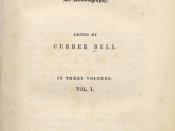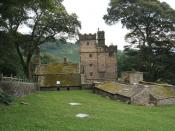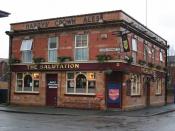Jane Eyre Literary Analysis
In the novel, Jane Eyre, the motif of fire is the most predominant symbol in the book. It is used to symbolize conflicts, danger, and of comfort. The motif of fire is shown through three main examples: Mrs. Temple's fire, Mr. Rochester's fire, and St. John's fire.
When Jane is living at Lowood, Jane sees Mrs. Temple as her first true adult friend. Her comfort of Mrs. Temple is shown through Jane's description of her fire. Eyre describes the fire as something of a physical comfort, not of terror. The fire is used as a symbol of kindness and friendship, as well as acceptance as an equal to Mrs. Temple. This scene is in direct contrast of what Lowood is like. Lowood is described as a cold and dark place-the total opposite of Mrs. Temple's room. Another example of the positive side of fire is Jane's reliance in light.
Everywhere in Lowood is very dim, and Jane needs a candle to see. This shows her conflict to be self-reliant, yet she does need aid from others.
Mr. Rochester's fire shows the dangers hiding at Thornfield, as Mr. Rochester is almost killed in his room by a fire. Thornfield manor is a complete contrast to Lowood. Thornfield is warm, kind, and loving, but Lowood was dark, damp, cold, and desolate. Mr. Rochester's fire is also foreshadowing of hidden struggles within Thornfield, unbeknownst to the reader at the time of the fire. When the wedding is cancelled due to Rochester's past coming back to haunt, the all-consuming fire comes back into play, as Rochester asks Jane to be his mistress, which would be extremely insulting and morally unethical for Jane. This scene is drawn out further by the destruction of Thornfield by fire, which...



Nice Job
Im glad that you knew what you were talking about and you wernt just rambling on!!!!! good job
4 out of 4 people found this comment useful.